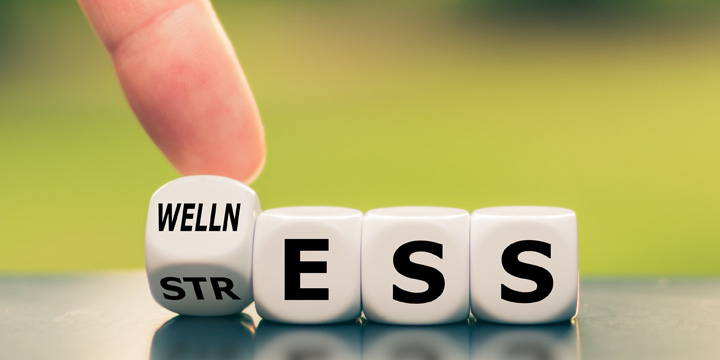
Burnout is a common word, but what is burnout and what can you do about it?
I think a good way to understand burnout if you live with diabetes is to reflect on 2 experiences that virtually everyone can agree on: first, life is hard; second, no one wants to be sick.
In our day-to-day lives, we routinely encounter problems, predictable and unpredictable challenges and stresses that are a normal part of life but are experienced as difficult. When you live with diabetes, the demands of managing it exist on top of all the other life challenges that people without diabetes experience. It is not like you are relieved of life burdens when diabetes burdens occur.
If you imagine that life challenges are like a weight that you lift, when you live with diabetes that weight is heavier. And remember, no matter how strong a person is, there is always a weight that they cannot lift. This puts me in mind of the expression “the straw that breaks the camel’s back.” This perspective can help us see that burnout is common and is not a sign of weakness. Importantly, burnout can be managed.
We also need to acknowledge that no one wants to be sick. Diabetes is a chronic illness, which means something has gone wrong in your body, through no fault of your own; in other words, diabetes itself is a burden. If this is the bad news, the good news is that good diabetes care can mean a person with diabetes can live a healthy life. But this takes work, which takes us back to the ‘life is hard’ comment.
What is diabetes burnout?
Burnout is a useful term because it is descriptive. Think of a fire that burns itself out. How does this happen? Well, the fire runs out of fuel (in this case, oxygen). Burnout in humans is when we run out of energy; energy to organize your day, to check your glucose levels, to monitor your food intake, to balance your diabetes self-care needs with the rest of life. Simply put, we become exhausted. So, burnout is best defined as emotional exhaustion. It is not a mental disorder; rather, it is the expected reaction to carrying too much mental weight. Importantly, it is manageable.
I like to ask 2 questions when I am interested in understanding a person with diabetes’ level of burnout.
- If diabetes were a weight that you carried in a knapsack on your back, how heavy would it be:
- A 1-pound loaf of bread?
- A 5-pound sack of potatoes?
- A 50-pound iron anvil?
- A 2-tonne truck?
I think you get it: the heavier the weight the more likely the burnout.
- How much energy do you have right now for all of the work of diabetes:
- A little?
- Some?
- A lot?
These questions help get a sense of the emotional burden of diabetes, i.e. the level of burnout.
Burnout is a subjective experience. It is important to understand that the emotional exhaustion that a person feels needs to be accepted. Many people struggle to accept their feelings. Yet feelings reflect the experiences we have in life. I remind people that normal functioning means that experiencing threat leads to the feeling of anxiety, experiencing loss leads to the feeling of sadness and experiencing unfairness leads to the feeling of anger. It does not take long to appreciate that diabetes can be associated with threat, loss and unfairness.
Many people are uncomfortable with their feelings and try to either suppress them or talk themselves out of them. However, feelings are not logical, they are like a reflex; they happen automatically. It is a good idea to accept your feelings so you can do something to manage them.
Burnout has mostly been studied in the context of work environments. Dr. Christina Maslach, a researcher at the University of California, Berkeley, developed the Maslach Burnout Inventory, which measures 3 things: exhaustion, reduced sense of personal accomplishment and cynicism (which means stop caring about the work that one does). There may be a parallel here with diabetes: burnout in the context of work is associated with too much to do and little control over the amount of work, which is not so different than diabetes.
What is the difference between burnout, diabetes distress and depression?
This is a common question and, as it turns out, one that is not easy to answer. This is because many of the experiences that would apply to someone who is experiencing burnout, diabetes distress or depression overlap.
I would suggest that these experiences may exist on a continuum, with burnout being the mildest form of distress, reflecting that the person has run out of gas; the tank is empty. Diabetes distress may be a bit more serious in that there are specific aspects of diabetes that are significant sources of distress (such as dietary changes or navigating the health system) that are likely to interfere with one’s ability to manage diabetes. Finally, depression refers to a mental health disorder in which the person has become overwhelmed and shuts down. This can be a serious mental health concern and often requires referral to a mental health professional.
What do I do about burnout?
I think the best way to respond to this question is to emphasize the point that the experience of burnout is normal. It is not a sign that something is wrong with you; rather, it is something that can be managed. In other words, it is a normal part of life.
In mainstream media and social media of late we have been hearing the word resilience. Resilience is bouncing back after you have been knocked down. As a psychologist I am happy that the concept of resilience is getting public attention. However, it is important not to think that resilience is something we don’t yet have, and we need to find it. I like to emphasize that resilience is part of life. Let me explain.
At the beginning of this article, I stated that “Life is hard”. Now, let’s say a person made that statement to you. If you followed up and asked, “Tell me a story about your life that explains what you mean that life is hard?” What you can expect to hear is a story that describes a hardship that the person has managed, i.e. resilience. So, I like to take the perspective that we all have resilience we can tap into, we just might not know that we have it.
If the easiest way to understand burnout is as exhaustion, the effective solution is rest and recuperation. I would recommend the following:
- Accept your feelings. Don’t fight them or pretend they don’t exist; this will just make the burden greater.
- Don’t suffer in silence. If you have supports, reach out to them. The research shows clearly that social support is a good buffer from burnout.
- Find ways of relieving pressure. It can be easy to think that you need to give diabetes management your all every day, regardless of what is happening. This is unrealistic. As your sense of burnout (exhaustion) increases, find ways of taking breaks from the burdens of diabetes care. The trick here is to take short breaks and when the break is over to get back to management. I think about people and their work lives. Many people like their jobs but it can be pretty much guaranteed that regardless of how much one likes their job they like their weekends, vacations and the prospect of eventually retiring. There is an expression I like to use: it’s not falling off the wagon that is the problem, it is how far you stray and how long it takes you to get back on the wagon. If you are feeling burnout, consider reaching out to your diabetes healthcare team to let them know how you are feeling and work with them to find ways of relieving the pressure (restoring your energy) without straying too far from the basics of diabetes care.
- Manage your stress. Stress builds, and as it builds the burden increases. This burden can lead to burnout and interfere with self-care. Finding effective ways of managing stress can be very helpful. When it comes to stress management, I like to emphasize the following: different strokes for different folks. Not all stress management strategies work for everyone. Find what works for you. Also, try to find stress-reducing strategies that you can do in a few minutes as well as ones that might take more time and effort. A leisurely hike in the forest can be really helpful, but it can be equally helpful to have things that take only 3 or 5 minutes that you can build into your day.
That said, there are 5 types of stress management activities that are helpful. You might consider trying the following:
- Physical calming. Activities that give you a sense of calm and allow your body to relax. This can be anything from deep breathing, relaxation techniques, yoga, tai chi, prayer, reading a book, petting a cat, etc. etc.
- Physical discharge. This is the opposite of calming. Burning off your stress with activity is really helpful. Again, this can take any form that you like, such as jogging, dancing, vacuuming, gardening, listening to rock music, etc.
- Emotional expression. Try not to bottle up your feelings; find ways to express yourself. This could be talking, but it could also be forms of art like painting, music, writing or journaling, etc.
- Social connection. Humans are social beings; it can be extremely beneficial to connect to others who are willing to listen and understand. People often try to help by making suggestions but the best, and easiest, way to help someone is to listen.
- Acceptance: It is important to take action when there are things you can do to reach a goal or change a situation. But if you cannot control something, taking an attitude of acceptance and gratitude can be extremely helpful.
I hope by reading this article you are able to understand, accept and manage your experience of burnout in a manner that empowers you and helps you keep your diabetes under control.




